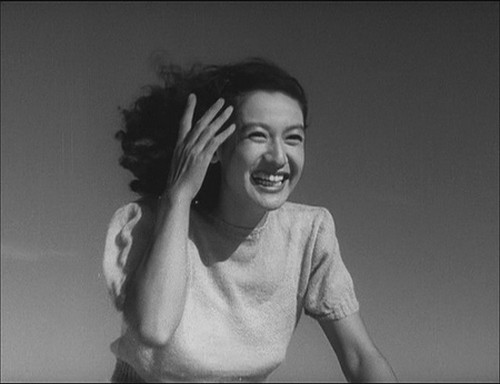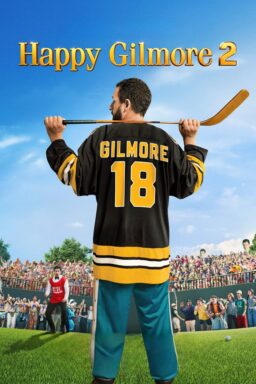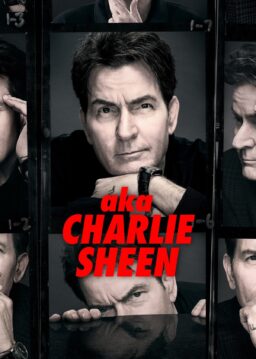In the sublime “Late Spring,” directed by Japanese master Yasujiro Ozu, an incandescent moment occurs as the vivacious Noriko enjoys an afternoon sojourn at the beach with her father’s assistant Hattori (Jun Usami).
Ozu’s play of light and air is intoxicating within the setup introduced, as the camera trails the duo gliding on bicycles down an open road. The camera is settled and moves tight on the body and face of the exquisite Noriko, played by the wonderful Setsuko Hara, in her first film with Ozu. Her face—open, delicate, mysterious—conjures a whole range of emotion and feeling from the lilting to the heartbreaking.
What registers most forcefully in the moment is the optimistic sense of wonder, subliminally evoked by the most contemplative of gestures.
“Late Spring” signaled Ozu’s haunting and extraordinary late period, and Hara was a primary and indelible emotional instrument of that greatness. They made six films together from 1949 to 1961. Their collaboration was among the greatest works ever produced for their uncommon subtlety, poetry and moral shading. In the movie that introduced Ozu to the West, the 1953 “Tokyo Story,” Hara takes part in the one of the most devastating emotional exchanges ever.
Again playing a character named Noriko, this time a widowed daughter-in-law of the elderly central couple that has come to Tokyo, her generosity and openness is a stark contrast to the petty selfishness of their actual children. Noriko sits with Kyoko (Kyoko Kagawa), the couple’s youngest daughter who still lives at home. Kyoko sharply criticizes her siblings for their lack of respect and devotion when she suddenly observes, “Isn’t life disappointing?”
Hara’s Noriko tersely responds, “Yes. It is.”
The news of Setsuko Hara’s death at the age of 95 is jolting and sad. (She actually died on September 5th, but for unknown reasons, the public announcement was not made until last week.) She was, quite simply, one of the finest actors of the 20th century. Ozu was an incomparable master. Hara (with Chishū Ryū and the other key members of his stock company) colored those works emotionally with poignancy, depth and lyricism.
Ozu framed his middle and lower class stories against the political and social tumult of the American Occupation and the rapid economic and technical transformation of postwar Japanese society. Negotiating the fluctuating lines between tradition and modernity, Hara embodied that social and dramatic conflict. In “Late Spring,” Noriko flits between the safety and sanctuary of her emotionally protected life with her widower father (Chishū Ryū) against her fear of the new and unknown.
By the time of “Early Summer,” Noriko is orchestrating her own break from the family resolutely on her own terms. Hara’s warmth and humanity is pronounced from the start, seen in her funny byplay with her young nephews. Her low-key defiance is also present, like her penchant for drinking beer. “I could [get married] in a minute if I wanted,” she informs her conservative, disapproving brother, and then proceeds to prove the point, but emphatically on her own terms.
In later Ozu works, Hara came to represent another strain of female disaffection and extreme alienation about Japan’s patriarchy and hierarchal social order. In “Tokyo Twilight,” Ozu’s final black-and-white film, Hara played her most taboo-shattering role as a defeated though proud young woman who leaves her abusive and alcoholic husband. In her last two films with Ozu, “Late Autumn” and “The End of Summer,” Hara inverted parts from her past, playing variations of her roles from “Late Spring” and “Tokyo Story,” captured in a different emotional register of solitude, separation and melancholy.
She also made four terrific films with the excellent Mikio Naruse and two by Akira Kurosawa. In the extraordinary “Repast,” the film that marked the beginning of Naruse’s own mature period, she narrated the film and plays an Osaka housewife who becomes distraught at discovering her stockbroker husband sexually involved with his niece. She returns to the Tokyo she abandoned, only to discover a more nihilistic, alien and traumatized place.
Disappointment was Naruse’s great theme, and her immersive work as a lonely wife in “Sound of the Mountain,” an adaptation of the novel by Yasunari Kawabata, is absolutely breathtaking.
Kurosawa’s “No Regrets for Our Youth” lacks the historical importance of “Rashomon.” As the director’s first post-war film and a rare work that showcased a female protagonist, Hara gives a brooding and commanding performance in tracing a woman’s transformation from a sheltered schoolgirl to political dissident. In the director’s adaptation of Dostovesky “The Idiot,” Hara went baroquely against type and essayed the part of a sexual temptress with a cool and natural aplomb.
Her life before the war makes for some very intriguing and interesting reading: She used family connections to break into the industry. She made her first film at the age of 15. Rather notoriously, she starred in the 1937 propaganda film “The New Earth,” a German co-produced co-directed by Leni Riefenstahl associate Arnold Fanck. Not all of her films are masterpieces. (The late Japanese film specialist Donald Richie once called Hiroshi Inagaki’s “The Birth of Japan” risible.)
The last five decades of her life were shrouded in mystery. After Ozu died of cancer in 1963, Hara ostensibly retreated from public life. She abruptly retired and lived in seclusion in Kamakura, about 30 miles outside of Tokyo.
In her own right, she was a rebel, sexually and politically. She was subliminal; she cast a trance. In the Ozu films, Hara was often quick to smile or laugh, but it was a complicating gesture, sometimes instinctive or spontaneous but more often than not a cloak that shielded a deeper pain or confusion. She was in great films made by great directors. Hara submitted herself to her directors. It was not a one-way street. What she gave back stands in time as varied, and beautiful, as any wonder of the cinema.












